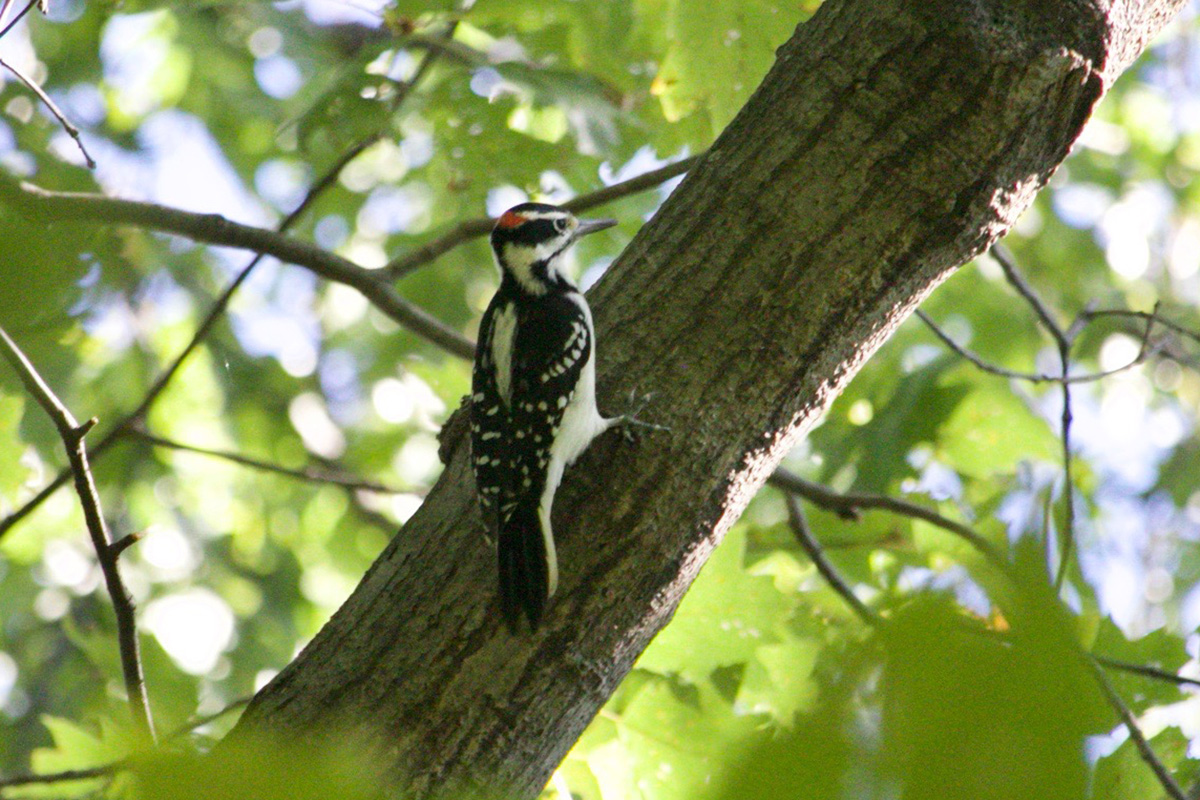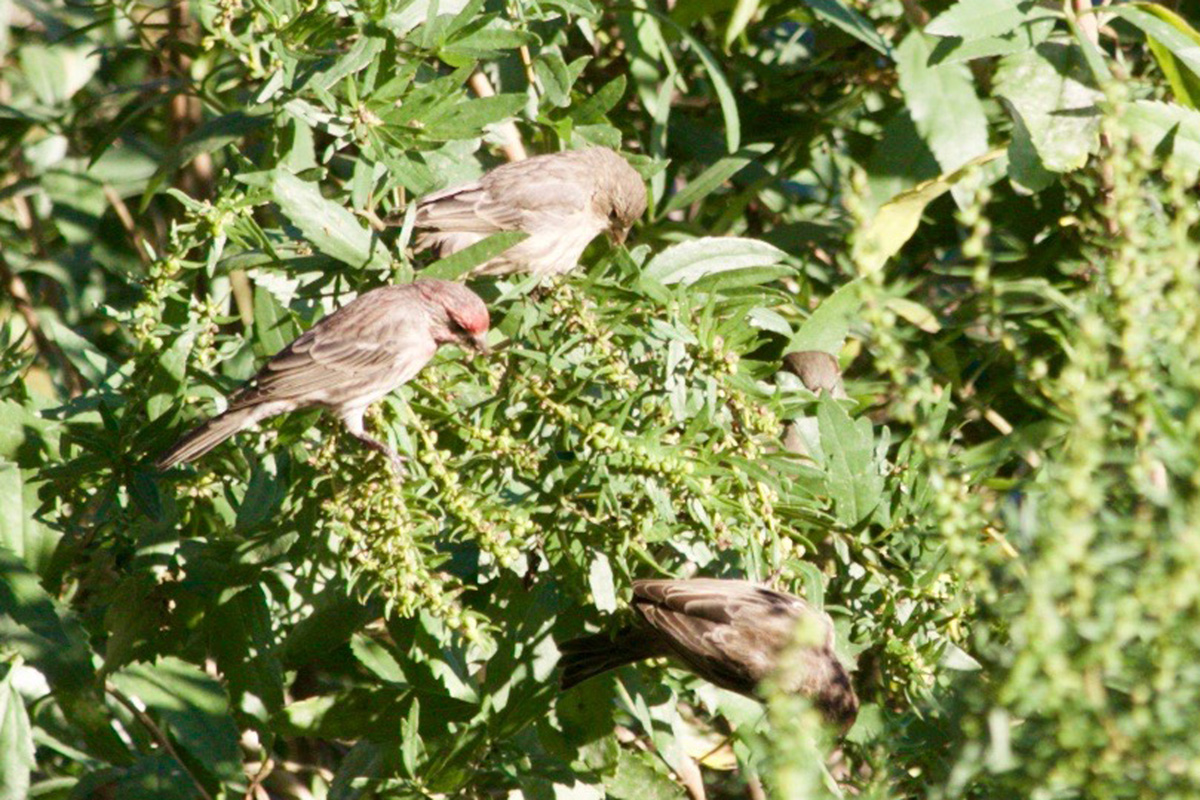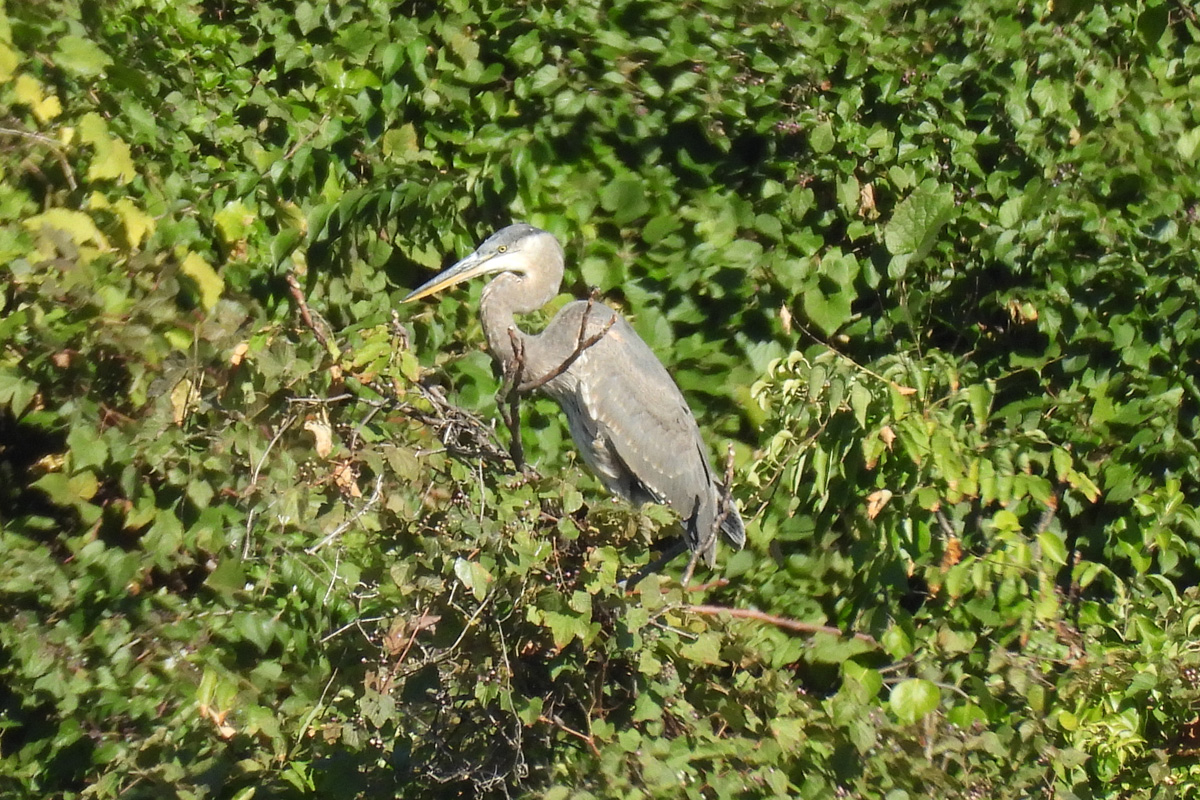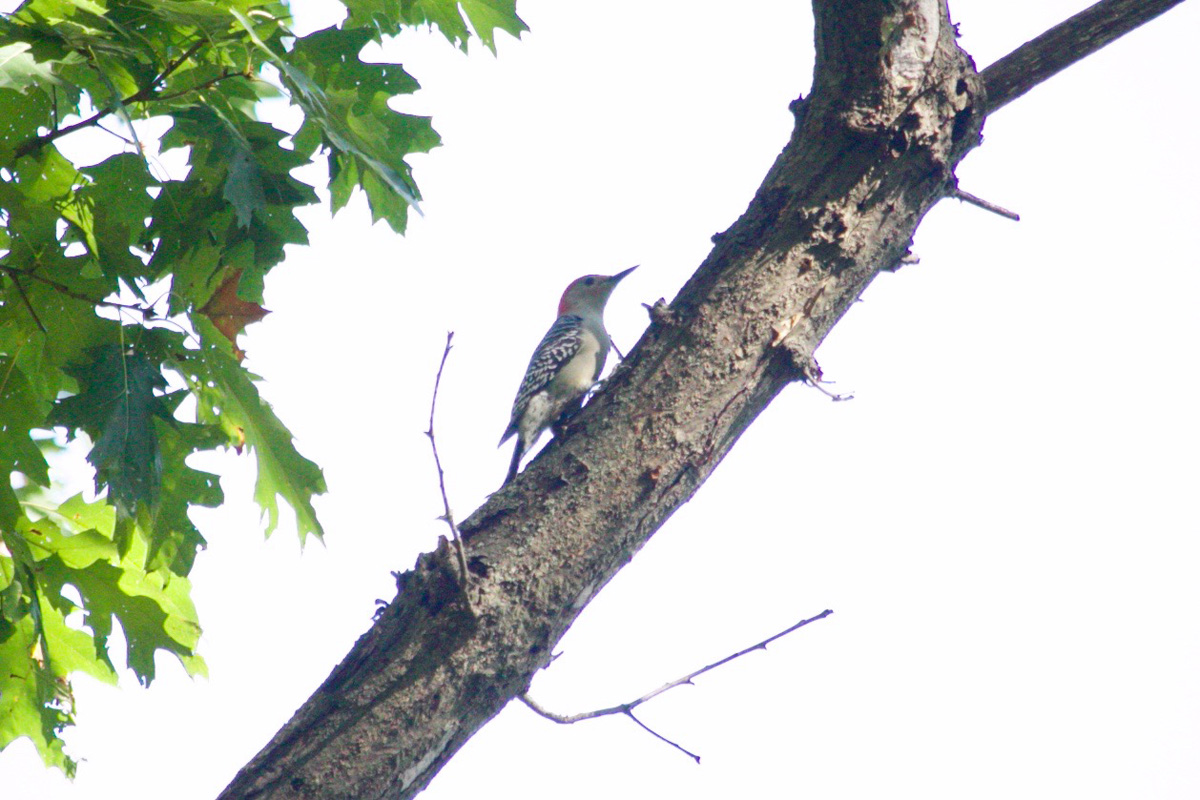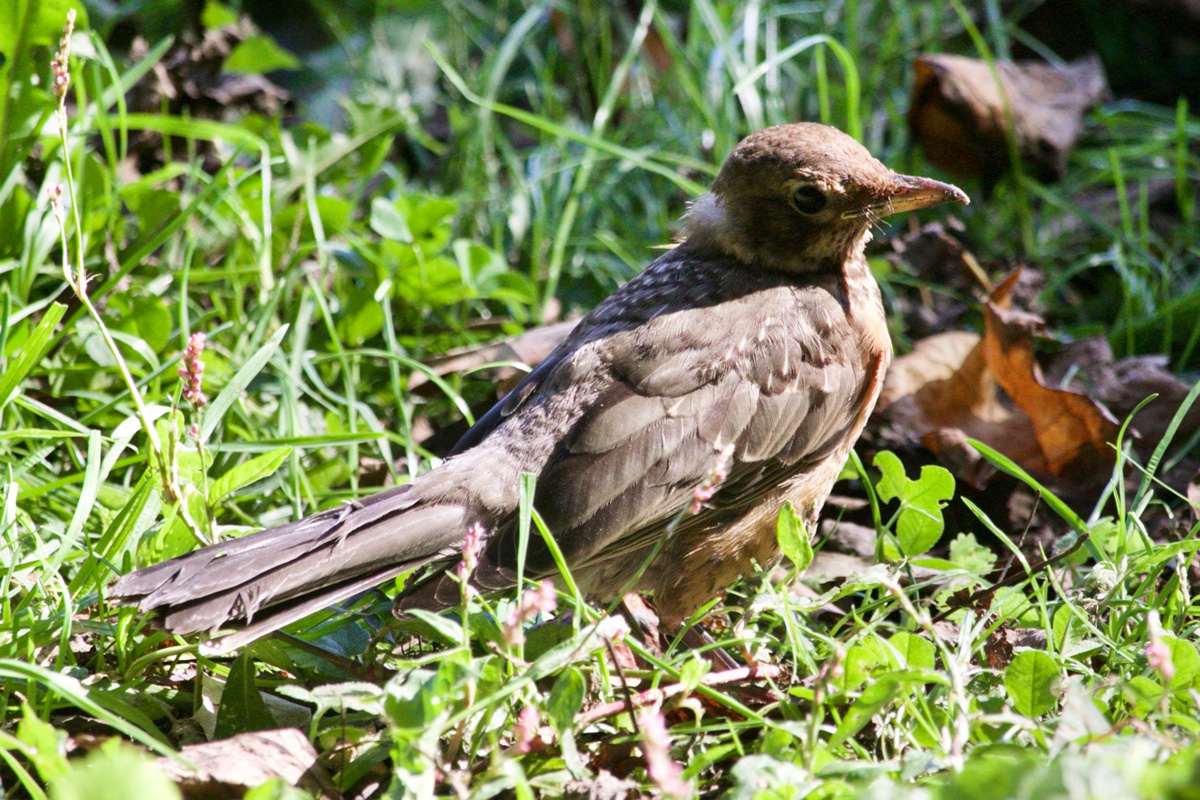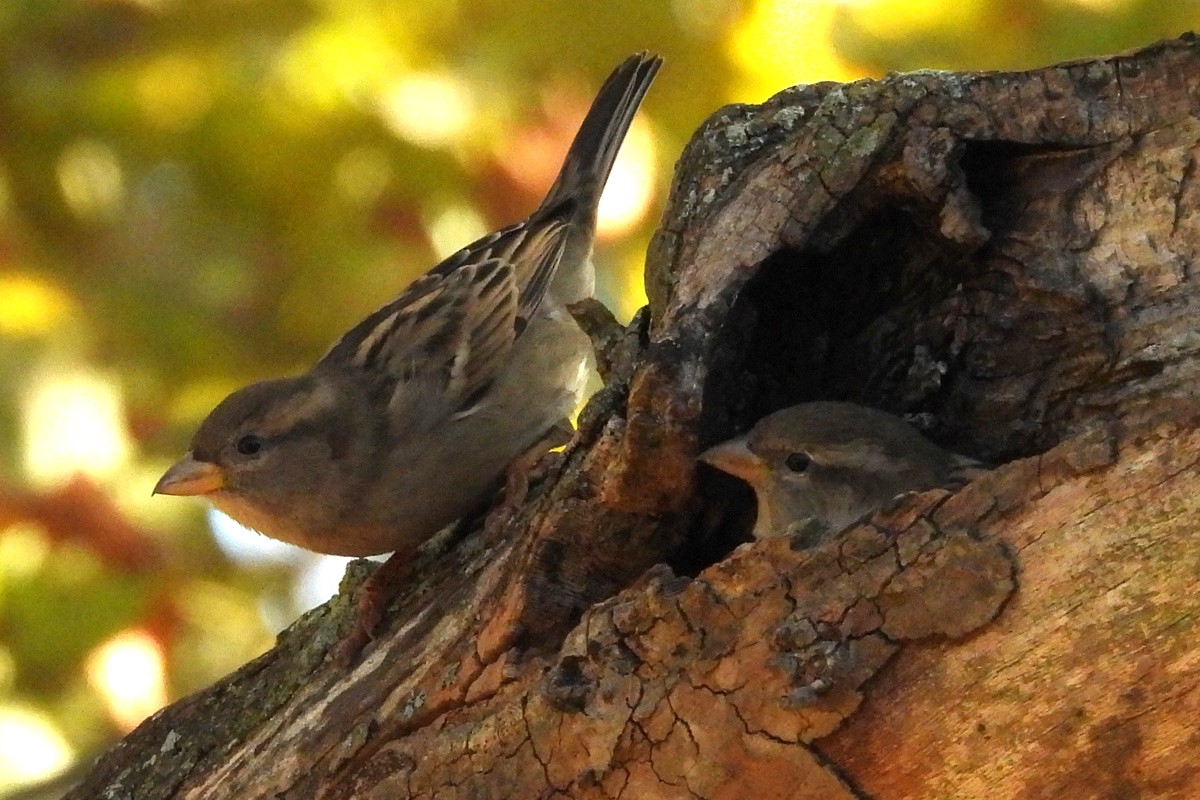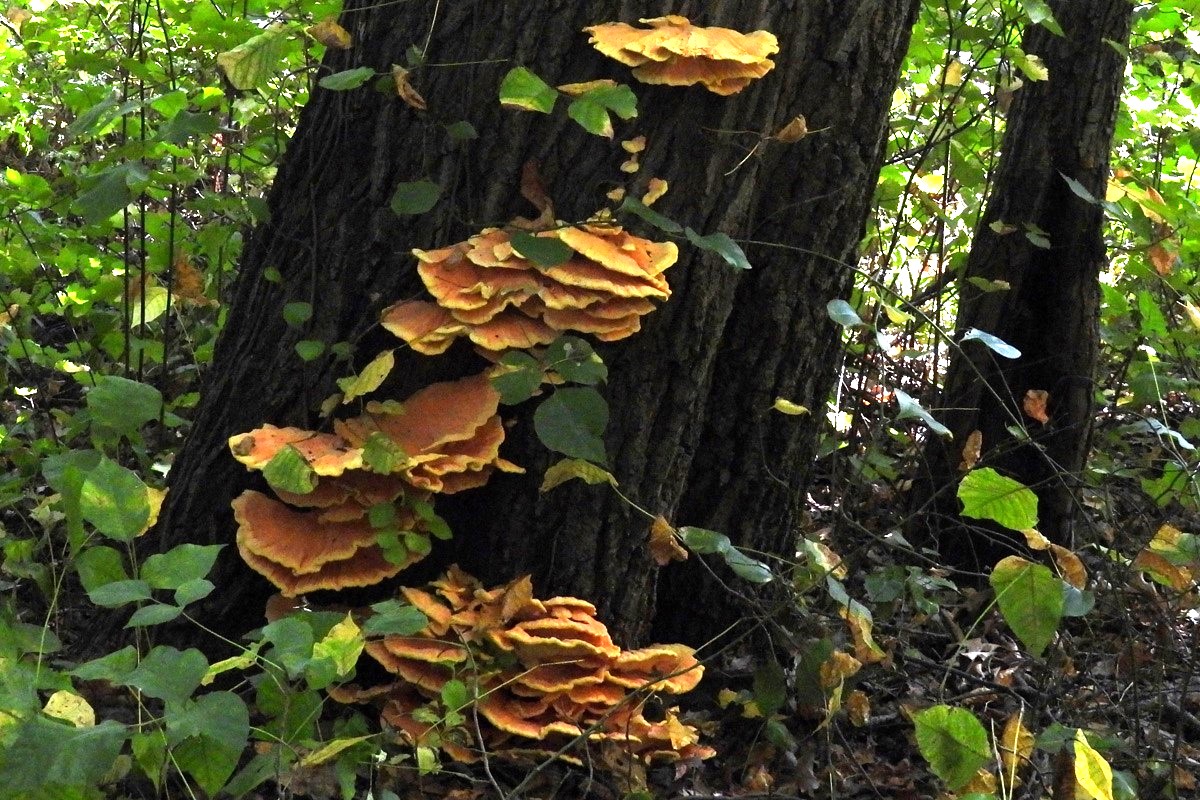Registrar: Lisa Kroop
Participants: 12
Weather: 56°F to 70°F; sunny; 4 mph north wind
Bird Species: 45
We walked at a “birders’ pace,” as our leader called it, starting along the edge of the recreation fields, passing House Sparrows, Blue Jays, some Dark-eyed Juncos, and a large group of Mourning Doves, and made our way down to the salt marsh. There, we sorted through the sparrows foraging in the grass and spotted the next phoebe as well as the first warbler of the day, a Blackpoll. Next—as we headed towards the woods, with a soccer field to our left, and wooded cliffs on our right—we paused. There were many Palm Warblers on the edge of the soccer field feeding in the grass and flying up into the nearby trees, with a Yellow-rumped Warbler joining them, and in the woods, our first Brown Creeper. We entered The Clove, a place sheltered from the noises of the city and darkened by shadows of the mature trees and the steep rock ridge. Birds were calling and, furtively moving along a log, a Winter Wren made a brief appearance to the delight of the group.
The weather was beautiful, the skies were a cloudless blue, and the overnight bird migration forecast had been impressive—even the popular news had broadcast it. And so as we began our walk we wondered whether all that would translate into our seeing a lot of birds in Inwood Hill Park. First evidence, as it turned out, was positive: among the first birds that we saw were a couple of kinglets in a low tree and an Eastern Phoebe perched exceptionally high on the crown of a very tall tree—and as we continued our walk we found more kinglets and phoebes throughout the park.
As we continued through the woods to the summit, and made our way back down, we encountered spots of migrant bird activity, including some winter arrivals. There were Northern Parulas and Yellow-rump Warblers, a Black-throated Blue Warbler, Hermit and Swainson’s Thrushes, a Blue-headed Vireo, a Red-breasted Nuthatch, Yellow-bellied Sapsuckers, and more kinglets—both Ruby-crowned and Golden-crowned—and more phoebes.
We reached Spuyten Duyvil Creek as our walk drew to a close. In the distance, flying over the Hudson River, was a Bald Eagle, our first and only raptor of the day. While only a couple of us saw it, we were all happy to hear it was there.
Many thanks to Loyan Beausoleil for leading us on this wonderful walk through such a precious park in New York City.
Species Lists
Birds
Mallard
Rock Pigeon (Feral Pigeon)
Mourning Dove
Ring-billed Gull
Double-crested Cormorant
Great Blue Heron
Bald Eagle
Belted Kingfisher
Yellow-bellied Sapsucker
Red-bellied Woodpecker
Downy Woodpecker
Hairy Woodpecker
Northern Flicker (Yellow-shafted)
Eastern Phoebe
Blue-headed Vireo
Blue Jay
Tufted Titmouse
Ruby-crowned Kinglet
Golden-crowned Kinglet
White-breasted Nuthatch
Red-breasted Nuthatch
Brown Creeper
Winter Wren
Carolina Wren
European Starling
Gray Catbird
Brown Thrasher
Swainson’s Thrush
Hermit Thrush
American Robin
House Sparrow
House Finch
Dark-eyed Junco (Slate-colored)
White-throated Sparrow
Savannah Sparrow
Song Sparrow
Swamp Sparrow
Eastern Towhee
Black-and-white Warbler
Northern Parula
Blackpoll Warbler
Black-throated Blue Warbler
Palm Warbler
Yellow-rumped Warbler (Myrtle)
Northern Cardinal
Mammals
Eastern gray squirrel
